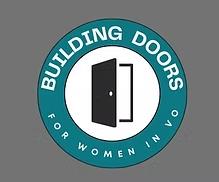Perspective is a marvelous thing. Looking at oneself, a situation or an object from a variety of vantage points often reveals something important to us that one can’t see from their singular point of view. It’s true in life and it’s true in the voice-over business.
Here’s another truth: Your perspective isn’t the only one that counts, it’s not even the most important one. The viewpoint that truly matters comes from someone else altogether. It starts with the people you are hoping will hire us. Missing this foundational marketing perspective is what almost everyone gets wrong before they even start, and often it’s the difference between success or failure.
It’s the client perspective.

Most people think that if they can persuade their target market to see value in their (fill in the blank here: idea, widget, talent, etc.) and buy it, their prospects will become customers. It’s the “spaghetti at the wall” method. Something will stick and that amount of something that sticks will be enough. There’s a better way. Walk up to the table, ask the customer what they’d like to have, take their spaghetti order, then serve them the best spaghetti you have. You spent your time wisely making the meal they want, and you have spaghetti neither on the walls nor on the floor which needs to be thrown away, and most importantly you have a happy customer who will be back and probably bring friends.
Know what clients want, and see media production through their eyes instead of hoping they’ll like what you put in front of them. Realign your perspective through the eyes of your customer and your business approach changes in an instant.
What is it that voice-over clients want? I’ll start broad and get specific. First, they want the same thing as every buyer wants in every industry: they want their lives to be easier. Commerce moves quickly, even in the arts. The project you’re auditioning for is one of many they are producing. They have many more productions in their queue with deadlines just as urgent, so as the talent you need to grasp what that means to their day and walk in the professional behaviors that cater to that reality.
Make people’s lives easier by being the professional you purport to be. Be great behind the mic. Be available. Communicate in a timely fashion, in short, direct emails – neither blunt nor extraneous. Do this in the way they prefer, not necessarily the way you prefer. If they text, you text. If they call, you call. Don’t ask questions you can get the answers to through quality script analysis or through research you can do yourself. Quote competitively in ways that conform to industry standard. Take instruction if they give it and follow directions. On the other side of that coin, be able to render exceptional voice-over in the face of no instruction or feedback. Figure it out. Hit timelines. Make sure your tech is tight. Never fail to follow through. Accept electronic forms of payment without charging them an extra 3% for the transaction fee. Never quibble over minutia letting it come between you. Make doing business with you a breeze.
All of this proves your worth and builds trust which you can use as the basis in developing a lasting relationship. This is what it means to give a client what they want in the way they want it.
Let’s take a quick look at what leads up to this type of understanding and execution, then how you leverage the client perspective, followed lastly by what to do beyond a gig so you can use the momentum.
First, get formally trained so you know what to do with what you have. Find a team who knows the way to set you up. Get professionally produced demos. They’re the tool of the trade. Homemade doesn’t cut muster. Ever. That’s spaghetti-method mentality. Do it right not because I say so, but because your clients do. Theirs is the opinion that counts over mine and over yours. That’s the client perspective at work in practical ways.
Have a plan and work your plan. When you email be sure to format both what you say and how you say it in a way that suits your target market’s style and pace. Think about what you’re saying in your communication. Are you writing in your style or theirs? If you’re not sure, err on the side of cordial and brief. Often, attempts to build credibility by sending out something like a quarterly newsletter end up being counterproductive because business prospects aren’t reading them for the most part. You communicated, but not with the message you are aiming for. It’s too “you” centered and can be interpreted as spam. Instead, send a link to a timely article about their industry, for example, showing that you’re interested in what serves them and is relevant to their world. They can see you’re being client-centric whether they click the link or not. It gets better results.
Once you have your foot in the door, hit your marks. Be a true professional. Often simply doing what you should be doing to make their lives easier ends up making you look like a hero. Once, when I was doing a first gig for a television commercial production company I simply gave them a revision within the same day they asked for it which allowed them to hold their original project timeline. They didn’t expect it and they were so impressed they’ve become one of my biggest regular accounts with half a dozen team members all emailing me their projects at any given time. To me, it’s just what I’m supposed to be doing. Either way, I have a happy client because I walk in a client-centered perspective. It informs my entire strategy.
There can often be great strategic advantages with perspective. When it comes to positioning yourself in the best and most effective possible ways to do the kind of voice-over you want to do you need to be all-in on finding and using strategic advantages. When your marketing is formed through the client perspective you dramatically increase your ability to succeed.





